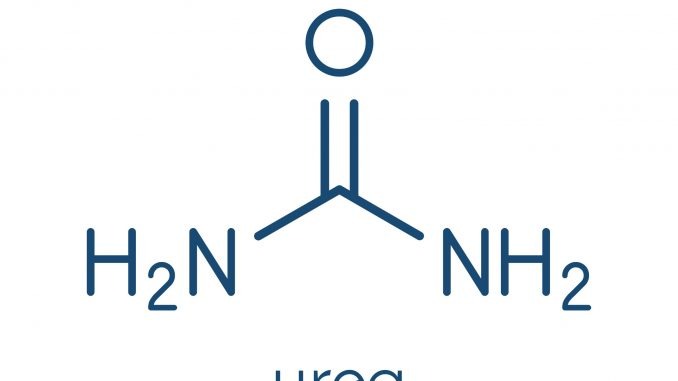
The urea cycle is the metabolic process by which humans remove ammonia from the body. Ammonia (NH3) is highly toxic and is the end product of amino-acid catabolism. Ammonia is also relatively insoluble too in water. To make it possible to excrete this ammonia generated, it is converted to a much safer compound called urea which is also highly water-soluble. The urea is excreted then in the urine.
The urea cycle is only performed by hepatocytes (liver cells). The urea produced in the liver is transported to the kidneys where it is then excreted in the urine.
Some textbooks also call it the Ornithine cycle because ornithine is the first compound encountered in the cycle. It’s also known as the Krebs-Henseleit urea cycle after those who first elucidated it in 1932. It also has the distinction of being the first metabolic pathway to be described and characterised.
Proteins are the main components of the body and make up between 10 and 12 kg dry weight in an average sized body. Proteins not only make up structural components such as hair, muscle, organs and tissues they also perform a myriad range of functions because they act as enzymes which are the catalysts of all reactions in the body, as hormones, for oxygen transport, cell receptors, etc. About half the protein is in skeletal and connective tissue and the remainder, no less important makes up the intracellular components of cells.
A normal healthy and fit person will have a total protein turnover rate of between 1% and 2%. This is mainly muscle proteins such as actin and myosin.
The process of protein breakdown is termed proteolysis. The end product of this process are the amino acids. These unit components of protein may be reused and converted into other compounds to generate energy or broken down further to generate ammonia. The amino acids are the primary source of nitrogen in metabolism which is the principle reason why ammonia is formed when they are completely broken down. A great deal of protein is broken daily which produces a large amount of nitrogenous waste compounds.
The amino acid structure is amphoteric in that it has an amino end group and a carboxylate group. The source of ammonia is the amino end group. All the nitrogenous waste produced by proteolysis in various tissues is transported to the liver only where it is processed into urea.
Ammonia in solution is in the form of ammonium ions which have a single positive charge. This is a highly toxic form! It can damage the brain severely for example. The ammonia generated from proteolysis is delivered to the liver without having it converted to its ionic form, the ammonium cation.
To deliver the ammonia in a suitable form to the liver requires a 2-step process. The first step is transamination and the 2nd following step is oxidative deamination.
Transamination is the transfer of the amino group from an amino acid. The molecule receiving the amino group is usually alpha-ketoglutarate but it could be alanine, another amino acid. Alpha-ketoglutarate is converted to the amino acid glutamate. Glutamate freely circulates in the blood and serves in this situation as the carrier of waste nitrogeneous material without it impacting the detrimental impact an ammonium ion would have on cells and tissues.
When glutamate reaches the liver, the second step occurs of oxidative deamination which is the removal of the amino group from the glutamate molecule. Glutamate is the only amino acid which ever undergoes this process of amino removal to any great extent. The key feature of this particular step is that processing of this amino acid to generate ammonia only ever occurs in the liver. The other critical feature is that the ammonia is only released in the mitochondria and not the cytoplasm and this is highly significant.

Copyright: samjore
The urea cycle is a 5-step process involving 5 different enzymes. Two steps occur in mitochondria and the rest in the cytoplasm (cytosol).
The ammonia released in the mitochondria is directly combined with a molecule of carbon dioxide to form the compound carbamoyl phosphate. The key enzyme carbamoyl phosphate 1 (CPS1) catalyses this reaction which is driven by the hydrolysis of 2 molecules of ATP (adenosine triphosphate). One of the phosphates from ATP is added to the carbamoyl moiety. Two molecules of ADP (adenosine diphosphate) are generated in that reaction. Just to reiterate, the enzyme CPS1 is only ever functioning in the mitochondria. The enzyme is activated by N-acetylglutamate.
The next (2nd) reaction also occurs in the mitochondria. A carbamoyl phosphate molecule combines with one molecule of ornithine which produces citrulline. Ornithine is an amino-acid but only has a role in the urea cycle – it is not involved in any other cycle or in peptide synthesis and thus found in proteins. Ornithine already possess two amino groups but by picking up the ammonia group from carbamoyl phosphate, adds a third amino acid becoming citrulline. This reaction is catalysed the enzyme, ornithine transcarbomylase (OTC). In the reaction, a molecule of phosphate is released.
The citrulline now leaves the mitochondria and enters the cytoplasm. The remaining part of the cycle occurs generating a molecule of urea in the process along with an ornithine molecule which is recycled by reentering the urea cycle again but in the mitochondria.
Citrulline is condensed with a molecule of aspartate which is another amino-acid. This forms argininosuccinate (the largest molecule created in the urea cycle). The aspartate too is a source of another amino group. The reaction is driven by hydrolysis of ATP but forms AMP (adenosine monophosphate) instead . It is catalysed by the enzyme argininosuccinate synthetase.
The next two reactions are the systematic breakdown of the largest molecule in the urea cycle. The enzyme argininosuccinate lyase catalyses the break-up of argininosuccinate to form another amino-acid, arginine and fumarate. Arginine is now carrying four nitrogen groups.
Arginine is then broken down further in the cytoplasm to generate ornithine catalysed by the enzyme, arginase. The other compound is urea and in producing this compound uses one molecule of water. It is a significant reaction because it takes two of the amino groups from arginine and combines it with the oxygen atom from water. The two hydrogen atoms from water are attached to arginine to form ornithine. Ornithine then returns back to the mitochondria to continue the cycle where it reacts with another molecule of carbamoyl phosphate.
Urea passes from the liver, dissolved into the blood where it is excreted in the urine.

Leave a Reply